
Loading...

Loading...
2025-06-13
Antara
Cardiac disease takes more lives than any other condition worldwide. The numbers are staggering, yet only a few patients take part in cardiopulmonary rehabilitation programmes that could save their lives. These well-laid-out programmes aim to reduce stress, lower the risk of death, and improve heart function. Ground barriers, financial problems, and limited access keep many patients from getting vital care.

The results of cardiac rehabilitation programmes speak for themselves - fewer hospital visits, reduced heart-related deaths, and better life quality. This approach fails to reach most patients in need. Medical experts started a mission to find alternatives, and continuous monitoring has become a breakthrough in cardiac recovery.
Remote cardiac rehabilitation works just as well as centre-based programmes. Patients exercise safely with no major complications. Clinical teams watch vital signs around the clock. They spot problems early and address concerns before they turn into emergencies. Patients feel safer as they recover at home. Additionally, research shows that remote monitoring substantially improves peak oxygen use—a vital sign of heart health. It also reduces hospital stays and cuts down admission time when patients need care.
Monitoring patients continuously is the foundation of cardiac rehabilitation that gives vital information to save lives. The technology can transform how care teams respond to their patients' needs. In care homes, this monitoring is seamlessly integrated with round-the-clock clinical support, ensuring timely intervention as care homes offers safe, recovery-focused environment.
Up-to-the-minute monitoring helps medical teams spot problems before they become emergencies. Systems can detect arrhythmias with remarkable precision. These early warnings give doctors valuable time to step in, as many patients cannot recognise their high-risk status before a cardiac event. This creates a health radar for the heart.
Modern cardiac monitoring depends on several technologies:
Nursing Interventions and Real-time Response
Nurses lead the monitoring systems by assessing vital signs and responding to alerts. They give medications, run diagnostic tests, and provide emotional support. Data transmission in real-time helps nurses identify warning signs of cardiac events quickly and step in before complications develop. They also teach patients about their condition and track their progress throughout rehabilitation programmes.
Patient safety improves significantly with continuous monitoring. Monitored patients return to emergency departments much sooner when problems arise. This leads to faster interventions. This approach reduces hospital readmissions and gives patients confidence to participate fully in their cardiac rehabilitation programme. The collected data helps doctors adjust treatment plans based on objective measurements rather than periodic check-ups.
Continuous heart monitoring has changed how cardiac rehabilitation works for patients around the world. Patients who can't make it to treatment centres now have a lifeline through remote supervision. This care reaches people who previously had no access to treatment. The approach fills important treatment gaps while keeping the same safety and success rates as traditional methods.
The advantages go way beyond the reach and influence of simple convenience. Medical teams can spot dangerous patterns early before they become life-threatening problems. Quick interventions help patients stay out of hospitals and spend less time there when admitted. Doctors use different monitoring tools like wearable ECG patches and smartwatches. These devices provide up-to-the-minute data analysis that helps create more effective recovery plans.
Nurses are, without doubt, the foundation of these monitoring systems. They turn raw data into meaningful care decisions that directly affect patient recovery. Patients feel more confident to take part in their recovery when they know someone watches over them constantly.
Research has shown that remote monitoring leads to better health markers, especially peak oxygen use. People recover better at home while doctors keep watch remotely. This mix helps both body and mind heal properly.
Tomorrow's cardiac rehabilitation will blend technology with a human touch. Patients get care that's more available, works better, and fits their specific needs. Heart disease might still be a major health risk, but round-the-clock monitoring helps more people do more than survive - they thrive after heart problems.
24/7 cardiac monitoring records your heart's electrical activity continuously as you go about your daily life. Three main types of ambulatory cardiac monitors exist: Holter, Event, and Mobile Cardiac Telemetry. A Holter monitor records for 1-4 days. Event monitors and mobile cardiac telemetry devices work for about 30 days. These devices catch irregularities even during sleep and can record automatically without patient input.
Constant supervision helps cardiac rehabilitation programmes by providing live data about heart function. This complete picture enables doctors to track progress, understand triggers, and tailor treatment plans. Regular check-ups can't match what continuous monitoring reveals about medication effectiveness and necessary adjustments. This approach enables patients to take an active role in their recovery, which often leads to better treatment compliance and healthier lifestyle choices.
Not every heart patient needs 24/7 monitoring. Doctors prescribe the right type of monitoring based on each patient's condition. Symptoms, risk factors, and suspected heart problems guide this decision. For instance, patients who experience occasional dizziness or heart palpitations might need extended monitoring to catch these infrequent events.
Today's facilities use several technologies:
Constant care creates a safety net for patients recovering from cardiac events. Doctors can spot worsening symptoms over the phone before they become critical. Patients get timely advice about adjusting medications. Studies show that helping patients with information and follow-up care during the first month after cardiac surgery could prevent unnecessary hospital returns.
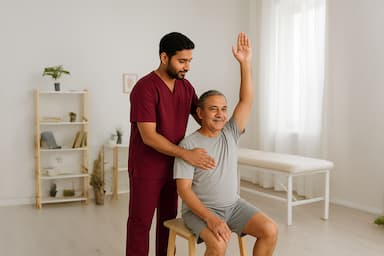
Why Antara Senior Care is Making Post-Op Recovery Easier in ...
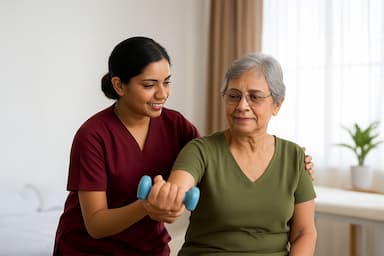
Physiotherapy vs. Physical Therapy: What’s the Difference?
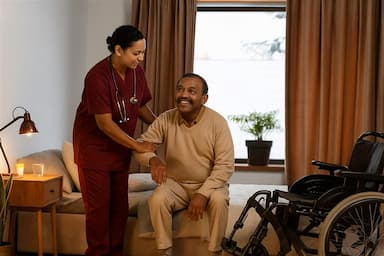
Palliative Care for Cancer: Managing Pain & Emotions
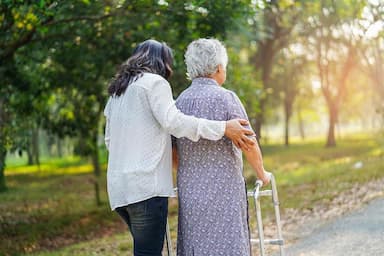
Palliative Care: Providing Comfort When It Matters Most
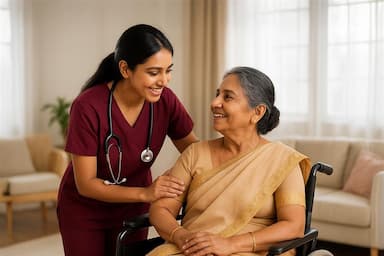
Importance of Home Care Services in Post-Surgery for Elders

Please fill in the form and submit the details to request an appointment.